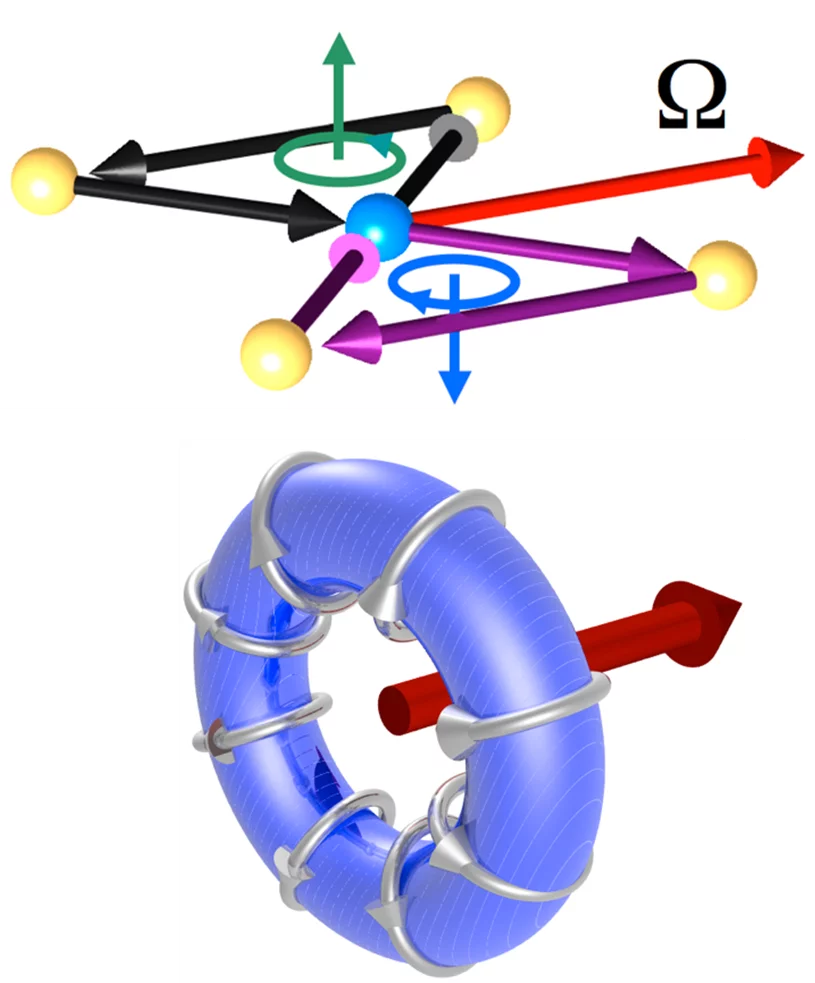Although high-temperature (Tc) superconductivity was discovered in the cuprates 25 years ago, there is still no consensus on its microscopic origin.
The peculiar properties of the normal state are widely thought to hold the key to understanding the electronic behavior of the cuprates, including superconductivity. For this reason considerable attention has been paid to the pseudo-gap region of the phase diagram. One basic and interesting theoretical approach to describe the pseudo-gap phase predicts the existence of time-reversal symmetry breaking because of orbital currents. However, experimental verification of symmetry-breaking by orbital currents in cuprates is very difficult. So far there is indirect evidence, which is strongly debated. We have performed soft X-ray resonant diffraction with polarization analysis, a technique pioneered at the Swiss Light Source, on cupric oxide (CuO) to study orbital currents. We have been able to unambiguously observe orbital currents in a copper-oxygen plaquette, the building block of high-temperature cuprates.
The recorded diffracted intensities from our sample have a complex dependence on the X-ray polarization that can be explained only by the presence of an ordered (antiferro-type) pattern of orbital currents between the copper and the oxygen atoms.
Our observations provides strong encouragement for models based on orbital current ordering and related phenomena in high-temperature superconductors.
The peculiar properties of the normal state are widely thought to hold the key to understanding the electronic behavior of the cuprates, including superconductivity. For this reason considerable attention has been paid to the pseudo-gap region of the phase diagram. One basic and interesting theoretical approach to describe the pseudo-gap phase predicts the existence of time-reversal symmetry breaking because of orbital currents. However, experimental verification of symmetry-breaking by orbital currents in cuprates is very difficult. So far there is indirect evidence, which is strongly debated. We have performed soft X-ray resonant diffraction with polarization analysis, a technique pioneered at the Swiss Light Source, on cupric oxide (CuO) to study orbital currents. We have been able to unambiguously observe orbital currents in a copper-oxygen plaquette, the building block of high-temperature cuprates.
The recorded diffracted intensities from our sample have a complex dependence on the X-ray polarization that can be explained only by the presence of an ordered (antiferro-type) pattern of orbital currents between the copper and the oxygen atoms.
Our observations provides strong encouragement for models based on orbital current ordering and related phenomena in high-temperature superconductors.
Facility: SLS
Science 332, 696 (2011)
DOI: 10.1126/science.1201061
Paul Scherrer Institut
Tel: +41(0)56 310 5366, E-Mail: valerio.scagnoli@psi.ch [English, Italian]
Dr. Urs Staub
Paul Scherrer Institut
Tel: +41(0)56 310 4494, E-Mail: urs.staub@psi.ch [German, English]
Reference
Observation of Orbital Currents in CuO V. Scagnoli, U. Staub, Y. Bodenthin, R. A. de Souza, M. García-Fernández, M. Garganourakis, A. T. Boothroyd, D. Prabhakaran, S. W. LoveseyScience 332, 696 (2011)
DOI: 10.1126/science.1201061
Contact
Dr. Valerio ScagnoliPaul Scherrer Institut
Tel: +41(0)56 310 5366, E-Mail: valerio.scagnoli@psi.ch [English, Italian]
Dr. Urs Staub
Paul Scherrer Institut
Tel: +41(0)56 310 4494, E-Mail: urs.staub@psi.ch [German, English]
